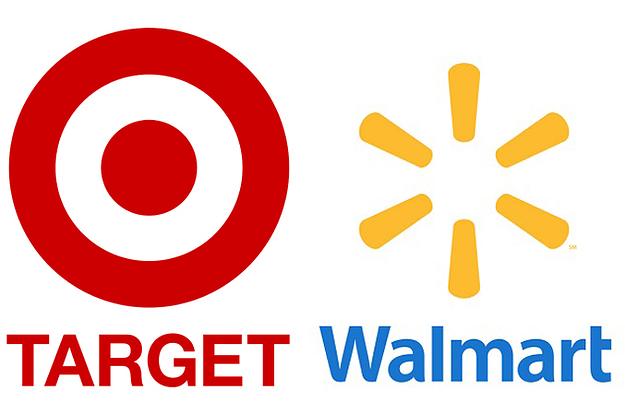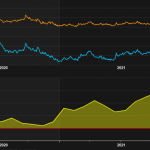The retail industry plays a vital role in the economy, providing essential goods and services to consumers. Two major players in this industry are Target and Walmart. These retail giants have become household names and have a significant impact on the economy.
In this comparison, we will analyze the various aspects of Target and Walmart’s operations, including their store layouts, product offerings, e-commerce strategies, marketing, and advertising, and corporate social responsibility initiatives. By examining these areas, we can gain insight into how the two retailers differ and what sets them apart from each other.
Consumers often have a choice when it comes to where they shop, and understanding the differences between retailers can help inform those choices. Whether you’re a loyal Target or Walmart shopper, or simply looking for the best deals and shopping experience, in this comparison, we will provide valuable insights into what each retailer has to offer.
Stay tuned as we dive into the world of Target and Walmart, and explore the great retail rivalry that exists between these two behemoths of the industry.
Company History and Background
Target and Walmart are two of the largest retail corporations in the world, with a combined revenue of over $550 billion in 2020. While both retailers have a massive presence in the industry today, they have very different backgrounds and paths to success.
Target was founded in 1902 as Dayton Dry Goods Company by George Dayton in Minneapolis, Minnesota. In 1962, the company opened its first Target store, which offered discounted merchandise with a focus on fashion and home goods. Target’s popularity grew rapidly, and by the end of the 1980s, it had become a major player in the retail industry.
Walmart, on the other hand, was founded by Sam Walton in 1962 in Bentonville, Arkansas. Walton started with a single discount store, which grew into a chain of stores across the country. Walmart’s business model focused on providing low prices and a wide variety of products to consumers, and it quickly became a favorite among budget-conscious shoppers.
Both Target and Walmart have continued to grow and evolve over the years. Today, Target operates over 1,900 stores across the United States, while Walmart has over 10,000 stores worldwide. While their store sizes, layouts, and product offerings differ, both retailers remain competitive by constantly adapting to changing consumer trends and preferences.
In terms of financial performance, Walmart has a significantly higher revenue and profit margin than Target, making it the largest retailer in the world. However, Target has made strides in recent years, expanding its product lines and investing heavily in its e-commerce capabilities to compete with Walmart and other online retailers.
Store Layout and Design
The layout and design of a store play a crucial role in shaping the shopping experience and creating a lasting impression on consumers. Target and Walmart have very different approaches to store layout and design, which reflect their respective business models and target demographics.
Target’s stores are known for their bright and modern design, with wide aisles and well-organized product displays. The company places a strong emphasis on aesthetics, with attention to details like stylish signage and attractive end caps. Target’s layout is intentionally designed to encourage exploration, with product groupings that appeal to a specific audience, such as baby products or electronics.
Walmart, on the other hand, has a more utilitarian approach to store layout and design. The company’s stores are typically larger and more sparsely decorated, with a focus on providing a wide variety of products at low prices. Walmart’s layout is organized by product category, with sections for groceries, electronics, and home goods, among others.
While Target and Walmart’s store layouts and designs differ significantly, both retailers have made efforts to improve the shopping experience for their customers. Target has invested heavily in redesigning its stores in recent years, incorporating more natural lighting and open spaces to create a more inviting atmosphere. Walmart has also made changes to its store layout, introducing more self-checkout lanes and redesigning its grocery department to make it more convenient for shoppers.
Product Offerings
Another important factor in the retail industry is the range of products offered by each retailer. Target and Walmart have different product offerings, which reflect their respective business models and target demographics.
Target is known for its trendy and stylish merchandise, with a focus on apparel, home decor, and electronics. The company partners with well-known designers and brands, such as Levi’s, Nate Berkus, and Joanna Gaines, to offer exclusive and high-quality products. Target also has a strong presence in the grocery and household essentials categories, offering a range of organic and natural products.
Walmart, on the other hand, has a wider variety of products, including groceries, electronics, home goods, and more. The company’s business model is based on providing low prices and a one-stop-shop experience for its customers. Walmart has its own private-label brands, such as Great Value, which offers affordable alternatives to name-brand products.
While both retailers offer a range of products, their target demographics and marketing strategies differ. Target caters to a more upscale and fashion-conscious audience, while Walmart’s customer base is broader and more price-sensitive. Both retailers have made efforts to expand their product offerings in recent years, with Target investing in its beauty and wellness categories, and Walmart introducing more organic and natural products.
E-commerce Strategy
The rise of e-commerce has transformed the retail industry, with consumers increasingly turning to online shopping for convenience and accessibility. Target and Walmart have both invested heavily in their e-commerce strategies, recognizing the importance of digital channels in reaching customers and driving sales.
Target has made significant strides in its e-commerce capabilities in recent years, with online sales growing by more than 145% in 2020 alone. The company has focused on integrating its online and offline channels, offering services like curbside pickup and same-day delivery from stores. Target has also invested in its digital infrastructure, with the acquisition of technology companies like Shipt and Grand Junction to improve its delivery capabilities.
Walmart has also prioritized e-commerce, with online sales growing by over 79% in 2020. The company has made significant investments in its digital capabilities, including the expansion of its online grocery delivery and pickup services. Walmart has also partnered with third-party marketplaces, such as Shopify and BigCommerce, to expand its online product offerings and reach new customers.
Both retailers have made significant progress in their e-commerce strategies, but there are some notable differences. Target has focused on integrating its online and offline channels, offering a seamless and convenient shopping experience for customers. Walmart, on the other hand, has prioritized its online grocery business, which has seen significant growth in recent years.
Marketing and Advertising
Marketing and advertising play a crucial role in shaping consumer perceptions and driving sales in the retail industry. Target and Walmart have different approaches to marketing and advertising, reflecting their respective brand identities and target demographics.
Target is known for its trendy and stylish marketing campaigns, which often feature high-profile celebrities and partnerships with well-known brands. The company’s marketing efforts focus on creating an aspirational image, with a strong emphasis on design and aesthetics. Target has also invested heavily in social media marketing, partnering with influencers and creating engaging content to reach younger audiences.
Walmart, on the other hand, has a more practical approach to marketing and advertising. The company’s marketing campaigns focus on highlighting its low prices and wide selection of products. Walmart’s advertising often features real customers sharing their experiences, emphasizing the company’s commitment to everyday people.
Both retailers have made significant investments in their marketing and advertising efforts, but their strategies differ in their approach and execution. Target has a more aspirational and design-focused approach, while Walmart emphasizes affordability and accessibility.
In recent years, both retailers have also embraced digital advertising, with a focus on personalized and targeted advertising to reach specific customer segments. Target has also experimented with augmented reality, allowing customers to virtually try on makeup and see how furniture looks in their homes.
Corporate Social Responsibility
Corporate social responsibility (CSR) is an increasingly important factor for consumers when deciding which companies to support. Both Target and Walmart have made significant efforts to prioritize CSR, with a focus on sustainability, diversity, and community engagement.
Target has made sustainability a key priority, with a goal of achieving net-zero emissions by 2040. The company has invested in renewable energy, with solar panels on the roofs of many stores and distribution centers. Target has also committed to sourcing more sustainable products and reducing waste, with a focus on circular design principles.
Walmart has also prioritized sustainability, with a goal of achieving zero emissions by 2040. The company has invested in renewable energy, with a significant portion of its energy coming from wind and solar sources. Walmart has also committed to reducing waste and promoting sustainable products, with a focus on reducing plastic waste and promoting sustainable agriculture.
Both retailers have also made efforts to promote diversity and inclusion, with initiatives aimed at supporting underrepresented groups. Target has made significant progress in increasing diversity in its workforce and leadership positions, with a commitment to achieving gender and racial parity by 2030. Walmart has also made efforts to increase diversity, with a focus on creating a more inclusive workplace and supply chain.
In addition to sustainability and diversity, both retailers have also prioritized community engagement, with a focus on supporting local communities and charitable organizations. Target has a strong tradition of community involvement, with a focus on education, the arts, and social services. Walmart has also made significant contributions to charitable organizations, with a focus on supporting education and disaster relief efforts.
Conclusion
Target and Walmart are two of the largest retailers in the world, with a long history of rivalry in the retail industry. While both companies offer a wide range of products at affordable prices, they have distinct differences in their approach to store layout and design, product offerings, e-commerce strategy, marketing and advertising, and corporate social responsibility.
In this comparison, we have explored the key differences between Target and Walmart, highlighting their respective strengths and weaknesses. Target is known for its trendy and stylish store layouts, diverse product offerings, and design-focused marketing campaigns, while Walmart emphasizes affordability and accessibility, with a focus on practical store layouts and a wide selection of products at low prices.
In terms of e-commerce strategy, both companies have invested heavily in online sales, with Target prioritizing customer experience and personalization and Walmart emphasizing speed and convenience. When it comes to marketing and advertising, Target has a more aspirational and design-focused approach, while Walmart emphasizes affordability and accessibility.
Finally, both retailers have made significant efforts to prioritize corporate social responsibility, with a focus on sustainability, diversity, and community engagement.
In the end, the choice between Target and Walmart will depend on individual shopping preferences and needs. Whether you prioritize trendy design, affordability, or sustainability, both retailers offer unique strengths and advantages. Understanding the differences between Target and Walmart can help you make an informed decision and find the retailer that best suits your shopping needs.















